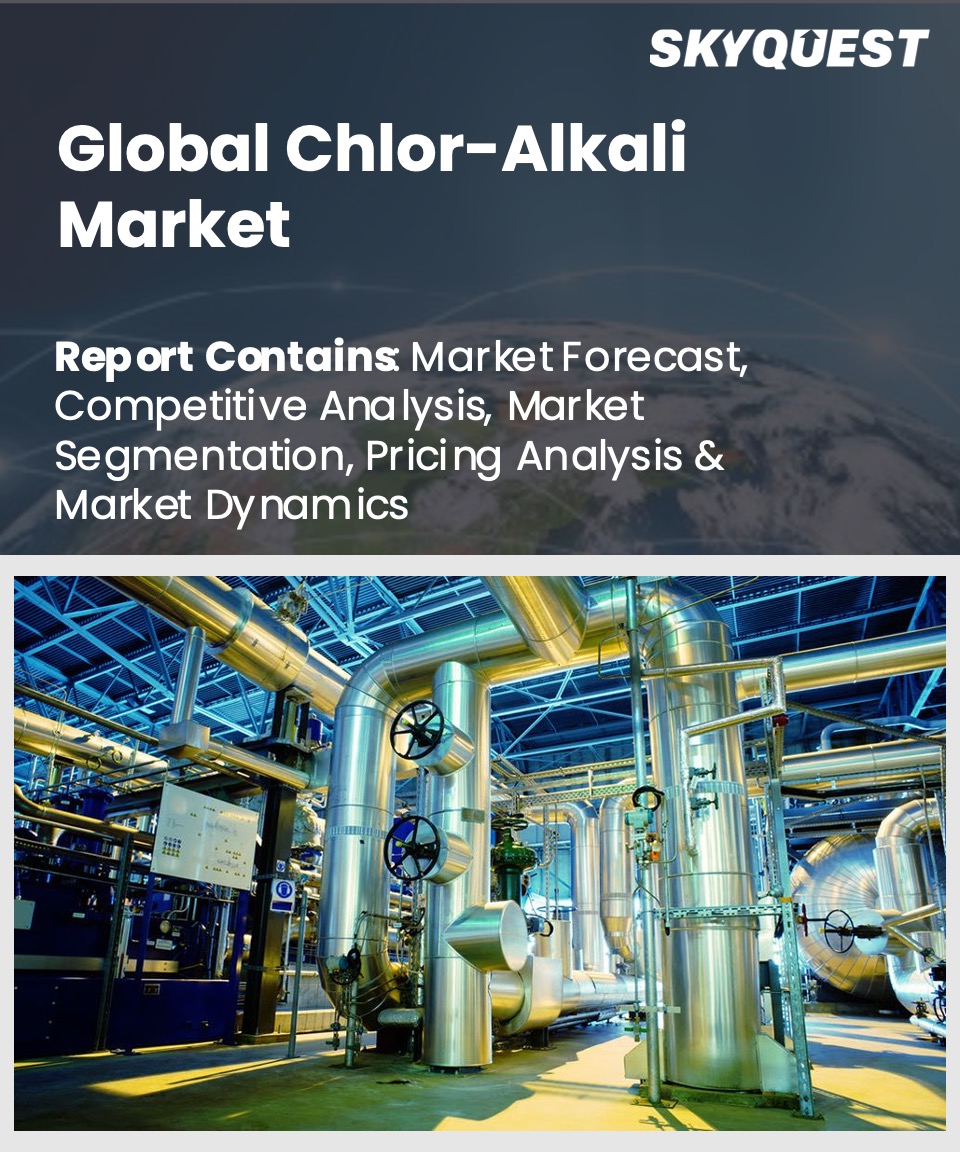
Report ID: SQMIG15A2308

Report ID:
SQMIG15A2308 |
Region:
Global |
Published Date: December, 2024
Pages:
238
|
Tables:
63 |
Figures:
75
Chlor-Alkali Market size was valued at USD 65.79 Billion in 2023 and is poised to grow from USD 68.49 Billion in 2024 to USD 98.32 Billion by 2032, growing at a CAGR of 4.1% during the forecast period (2025-2032).
Over the projected period, it is anticipated that the global chlor alkali market would expand. Chlor-alkali refers to the scientific processes used to produce caustic soda, bleaching powder, sodium hypochlorite, hydrogen gas, chlorinated paraffin, and other sodium and chlorine-based derivatives and products. The process involves electrolyzing sodium chloride solution (brine solution), which ensures the production of the aforementioned products. The main goods produced by the chlor alkali industry are soda ash, chlorine gas, and caustic soda.
Rising demand from the building and vehicle industries, as well as increased use in the pulp, food, and paper industries, are some of the main causes. Manufacturers are setting up facilities to produce related items efficiently as chlorine manufacturing technology continues to advance and industrialise. To minimise environmental damage, almost all companies worldwide are refocusing their efforts on creating chlor alkali compounds using membrane cell technology. Over the projected period, significant investments are predicted to be made in the global alumina business, which is currently booming.
Since caustic soda is a primary raw material in the process of refining alumina, growth in the alumina market is anticipated to drive caustic soda demand throughout the projected period, hence benefiting the chlor-alkali chemical sector in the long run. The procedure's influence on the environment is the industry's first difficulty. Emissions of mercury and carbon have raised concerns. However, because of how energy-intensive the technique is, the increased energy consumption is anticipated to limit the expansion.
The initial division of the chlor alkali market is done according to the products caustic soda and soda ash. The functionality of the product is another segmentation factor. For soda ash, polyvinyl chloride, which also contains organic compounds, serves as chlorine's main use. The glass industry is its primary market, whereas Caustic soda mostly serves the inorganic, organic, and paper industries.
US Chlor-Alkali Market is poised to grow at a sustainable CAGR for the next forecast year.
Our industry expert will work with you to provide you with customized data in a short amount of time.
REQUEST FREE CUSTOMIZATIONWant to customize this report? This report can be personalized according to your needs. Our analysts and industry experts will work directly with you to understand your requirements and provide you with customized data in a short amount of time. We offer $1000 worth of FREE customization at the time of purchase.

Report ID: SQMIG15A2308